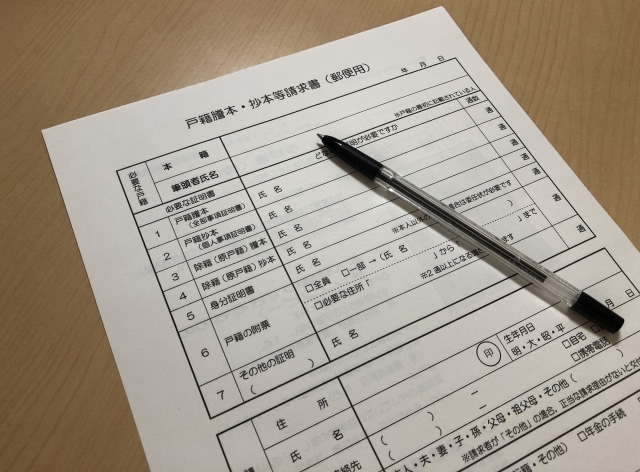NEWS Japan’s Death Certificate: A Guide for Foreigners

When a loved one passes away, dealing with official documents is a necessary but difficult task. If you are a foreigner dealing with a death that occurred in Japan, the process can be very confusing. The documents that serve as a “death certificate” in Japan are very different from those in other countries, which can cause major problems with banks, governments, and inheritance procedures back in your home country. This guide explains the differences between a death certificate in Japan and other countries. We will cover the legal requirements, the importance of accurate translations, and how expert support can help you get the official documents you need. At FAM Investigation Agency, we help our international clients obtain these crucial documents efficiently and accurately.
Disclaimer: This article is for informational purposes only and is not legal advice. You should always consult with a qualified lawyer for advice on legal and inheritance matters.
Table of Contents
- The Main Point of Confusion
- The Different Types of Death Documents in Japan
- How is This Different from Other Countries?
- Challenges for Foreigners: Translation and Acceptance
- Our Solution: Expert Document Support
- Conclusion: Get the Right Documents, Done Right
The Main Point of Confusion

In a country like the United States or in Europe, when someone passes away, the government issues a single, official document called a “Certificate of Death.” This one document is used for all legal purposes. In Japan, there is no single document with that name. Instead, a death is proven through a series of different documents. Foreigners often ask for a “death certificate” and receive a simple paper that gets rejected by their bank or lawyer overseas. Understanding which document you actually need is the key to avoiding delays and frustration.
The Different Types of Death Documents in Japan
When a person dies in Japan, several documents are created. Knowing which is which is very important.

- The Death Notification Form (死亡届 – Shibo Todoke) This is the first paper that is filed with the city office, usually by a family member. It is a form that officially reports the death to the government. It is often attached to the doctor’s medical certificate of death. This is an important procedural document, but it is not the final, official proof of death for most legal matters.
- The Certificate of Acceptance (受理証明書 – Juri Shomeisho) This is a simple document issued by the city office that proves they have accepted the Shibo Todoke. It confirms the death has been officially reported. While useful for some domestic procedures in Japan, it is often not enough for international legal matters.
- The Family Register (戸籍謄本 – Koseki Tohon) This is the most important document. For a Japanese national, the ultimate legal proof of death is their updated koseki. When a person dies, their name is removed from the family register, and the date and cause of death are recorded. An official copy of this updated register is the document that is almost always required for international inheritance procedures, life insurance claims, and other major legal matters. This is what functions as the “real” death certificate in Japan.
How is This Different from Other Countries?
The difference is fundamental.

- In the West: A death is an individual event that creates an individual document (a death certificate).
- In Japan: For citizens, a death is a family event that is recorded as an update to a family document (the koseki).
This is why there is no direct, one-to-one translation for “death certificate.” The legal proof is not a standalone paper but an entry in a larger family record. This concept is vital for anyone searching for an heir in Japan, as the koseki is the only way to legally prove family relationships and deaths.
Challenges for Foreigners: Translation and Acceptance
This unique system creates two big problems for foreigners.

- Getting the Right Document: If you don’t know to ask specifically for a “koseki tohon showing the record of death,” you will likely be given a less useful document like the Juri Shomeisho. Knowing what to ask for is half the battle.
- Translation and Legalization: All of these documents are only issued in Japanese. For them to be accepted in your home country, you will need a professional, certified translation. In some cases, you may also need an apostille or other form of legal certification to prove the document is a real and official paper from the Japanese government.
Navigating this bureaucracy is very difficult without fluent Japanese and an understanding of the system.
Our Solution: Expert Document Support
Our service is designed to handle this entire process for you efficiently and accurately.

- We Know Which Documents to Get: You tell us what you need the document for (e.g., a US bank, a UK probate court), and we know exactly which Japanese document and supporting certifications are required.
- We Obtain the Documents for You: Our team can request and obtain the official documents from the correct government offices in Japan on your behalf.
- We Provide Accurate Translations: We work with professional translators to provide certified translations that will be accepted by legal and financial institutions abroad.
We take the confusion and stress out of the process. This work is often a key part of our roots research and family search services.
Conclusion: Get the Right Documents, Done Right
Dealing with legal documents after a death is a sensitive and often urgent matter. In Japan, the system for proving a death is different, and not understanding these differences can cause serious delays for inheritance and other legal procedures. By using an expert service, you can be sure you are getting the correct official documents, translated accurately, in the most efficient way possible.
If you are an expat, a lawyer, or living abroad and need to obtain official proof of a death that occurred in Japan, contact FAM Investigation Agency today for a free and confidential consultation.
